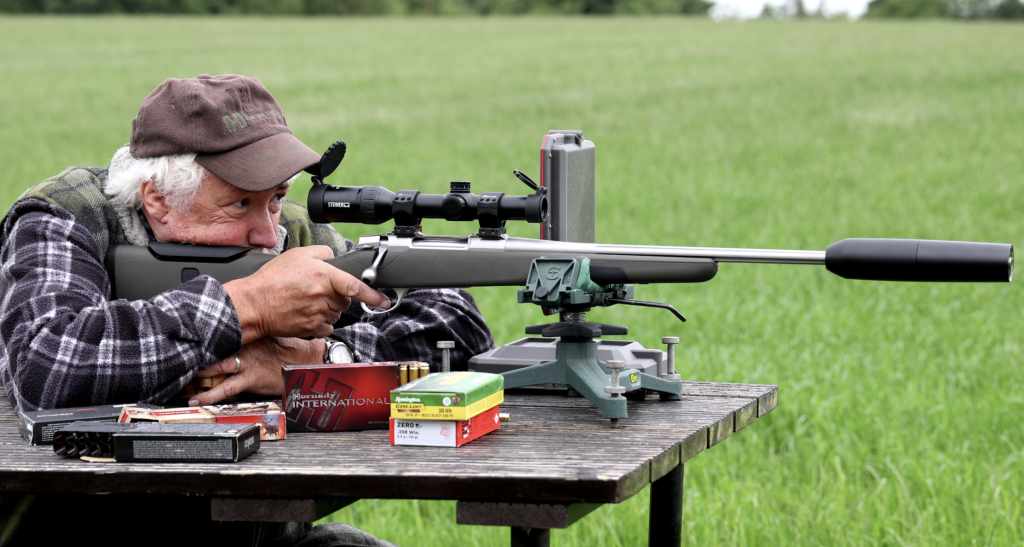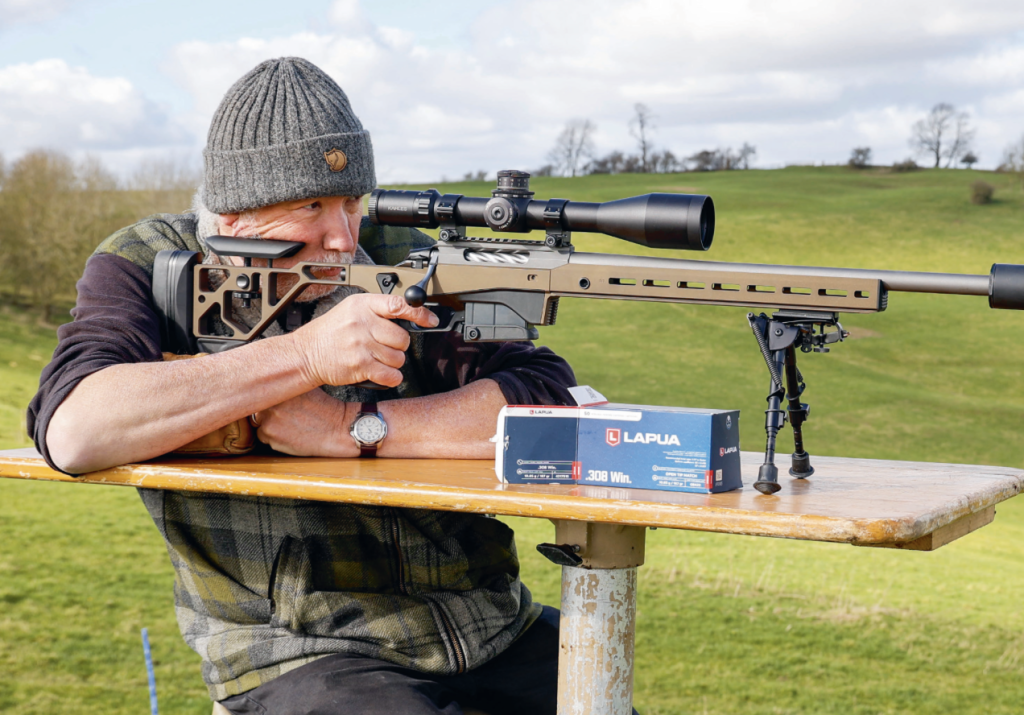Review: Marlin 1895 SBL in 45-70 Government
Chris Parkin tries out a big-game, close-quarters cannon and he likes it! Real-old school charm with just a touch of modernity
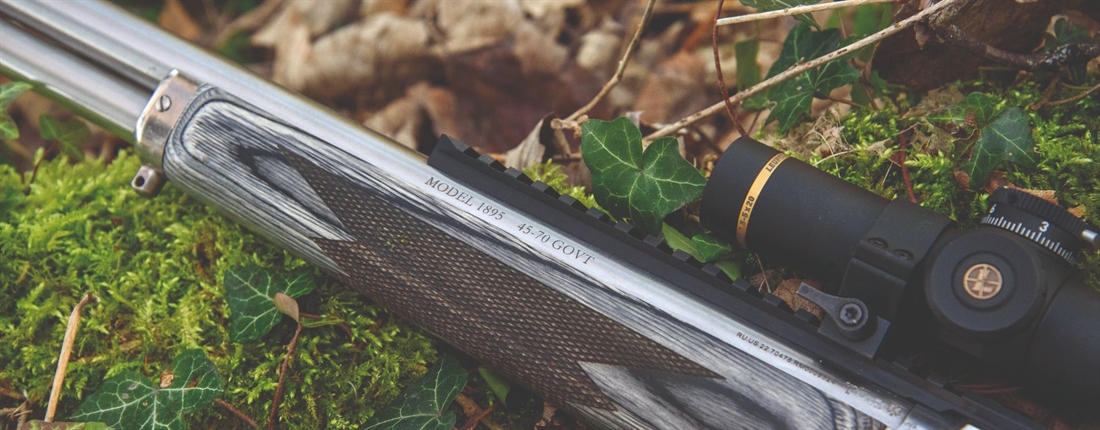
Marlin has long been a name associated with leveraction rifles. The company is now owned by Ruger, who have gone to great lengths to reinvent the manufacturing standards and reputation while honouring the rifle’s name, image and basic design.
SBL stands for Stainless Big Loop, referring to the large lever that enables fast cycling even when wearing gloves.
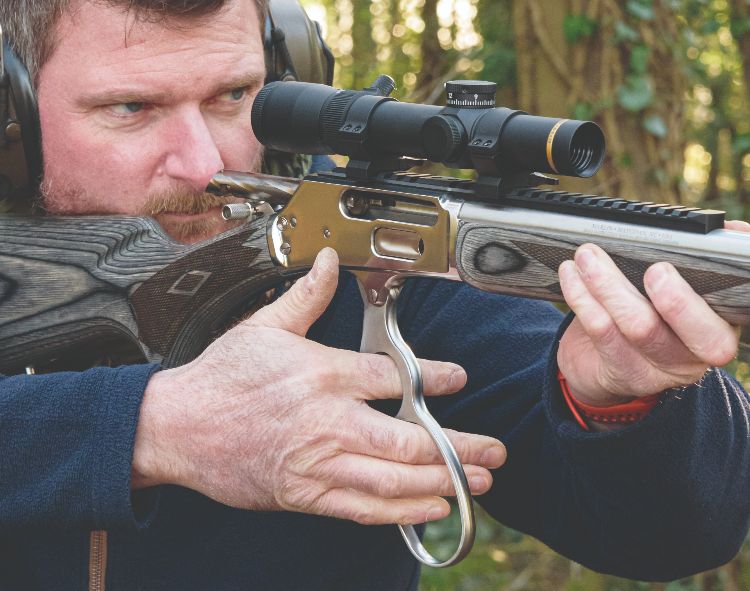 The rifle begins with a 410 stainless steel, cold hammer forged barrel wearing a cap concealing an 11/16×24 thread. Its 19″ overall length extends beyond the underslung six-round magazine tube to ensure room for a moderator or muzzle brake if desired. This is all polished to match the rest of the Ruger-made barrel, 416 stainless receiver and lever, which are both machined from forgings that maximise strength without any tolerances being compromised.
The rifle begins with a 410 stainless steel, cold hammer forged barrel wearing a cap concealing an 11/16×24 thread. Its 19″ overall length extends beyond the underslung six-round magazine tube to ensure room for a moderator or muzzle brake if desired. This is all polished to match the rest of the Ruger-made barrel, 416 stainless receiver and lever, which are both machined from forgings that maximise strength without any tolerances being compromised.
Open sights are fitted. A green tritium fibre foresight remains highly visible in all light conditions, where it sits centrally in the ghost ring rearsight, which can be removed from the back of the Picatinny rail if a scope is used. This hard-anodised black aluminium rail is a great contrast in colour, shape and modernity to what is still a classic rifle format, but I like how it allows a seriously well proven and functional tool to excel further with modern optics.
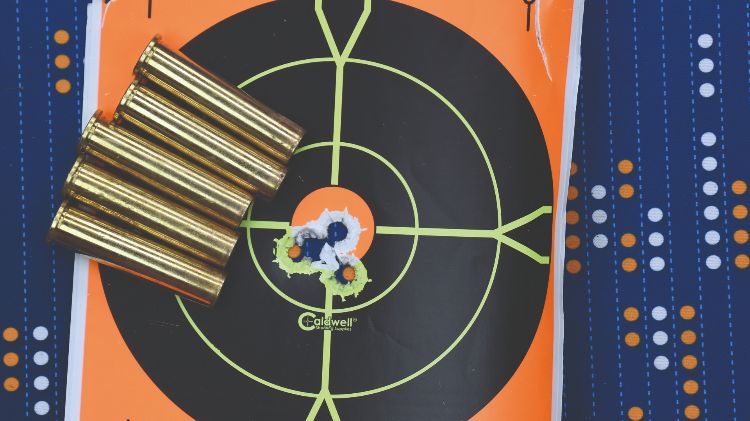
Ghost ring rear sights are my preferred choice if I have to use open sights. I have quite a lot of experience with similar concepts and it feels very comfortable. It’s also fully adjustable to refine your zero.
Similar metals in permanent contact can cause corrosion problems, so Ruger use a nickel-plated steel bolt to maintain a long-term slick action feel. It is spiral fluted to minimise friction or dirt jamming what can be one of the fastest cycling actions, long predating current straight-pull trends. There is an exposed hammer at the rear of the action as well as a cross-bolt safety just ahead of the action tang before it blends smoothly into the grey/black laminate stock.
The action’s right side sprung loading gate allows six rounds to be fed into the magazine tube as well as a seventh into the chamber if you so desire. In a hunting situation you can carry the gun hammer down or up with the safety on.
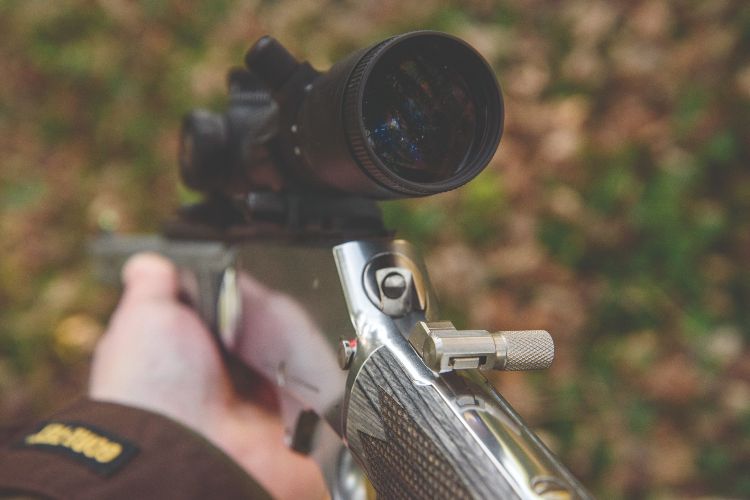
The character of these guns is vigour without delicacy. Swinging the big loop lever through its 90° arc opens the action really quickly. It’s fantastically smooth to operate but likes a no-nonsense approach. It’s best to keep your trigger finger extended onto the front of the integral trigger guard to minimise the chance of catching it on the trigger as you lock the lever closed, and this becomes embedded into your muscle memory the more you shoot the gun.
The wood-to-metal fit is quite good and the lines between the two materials blend and flow aesthetically and ergonomically, making the rifle attractive and natural to handle. When used with a low-magnification scope or open sights without a moderator, its short overall length and central balance point make it very pointable.
With a straight hand grip and lowmagnification optic, length of pull is not super critical, so although it is relatively short at 340mm/13.4″ there is no detrimental effect on recoil management. The rifle’s medium/soft recoil pad moulds well to your shoulder and there’s certainly no potential for bruising.
The gun is based on open-sighted cowboy rifle ergonomics. The comb slopes with quite a drop at the heel, which with iron sights would permit a cheek weld. In smaller calibres such as .357 or .44 Magnum this would be ideal, but with the heavy recoil generated by a .45-70, I’d avoid a tight cheek weld anyway. Adding a stock pack would give a bit of extra height and cushioning for your cheek bone and would also be useful if you are adding a scope.
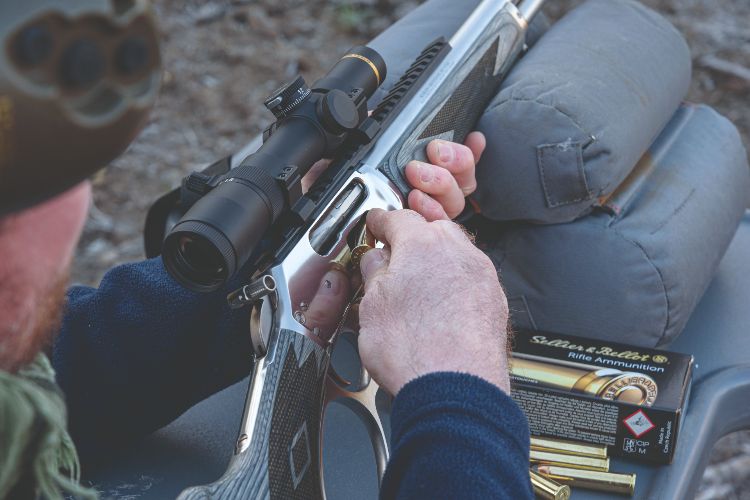
Stainless steel brings additional corrosion resistance to the party, but you can’t ignore cleaning entirely. It’s not as hard as you might think to strip the gun. With the rifle safe and unloaded, half-open the lever, unscrew the lever’s pivot screw, draw it from the action and then with the hammer all the way down, the bolt will slide out. There is a manual ejector claw on the inner wall of the action and you need to ensure it either stays in or is returned to its position before the gun is reassembled once more. With the bolt out you are able to access the internals and barrel for normal rod cleaning. Further dismantling is possible, but I didn’t venture too deeply into a rifle that just plain worked straight from the box.
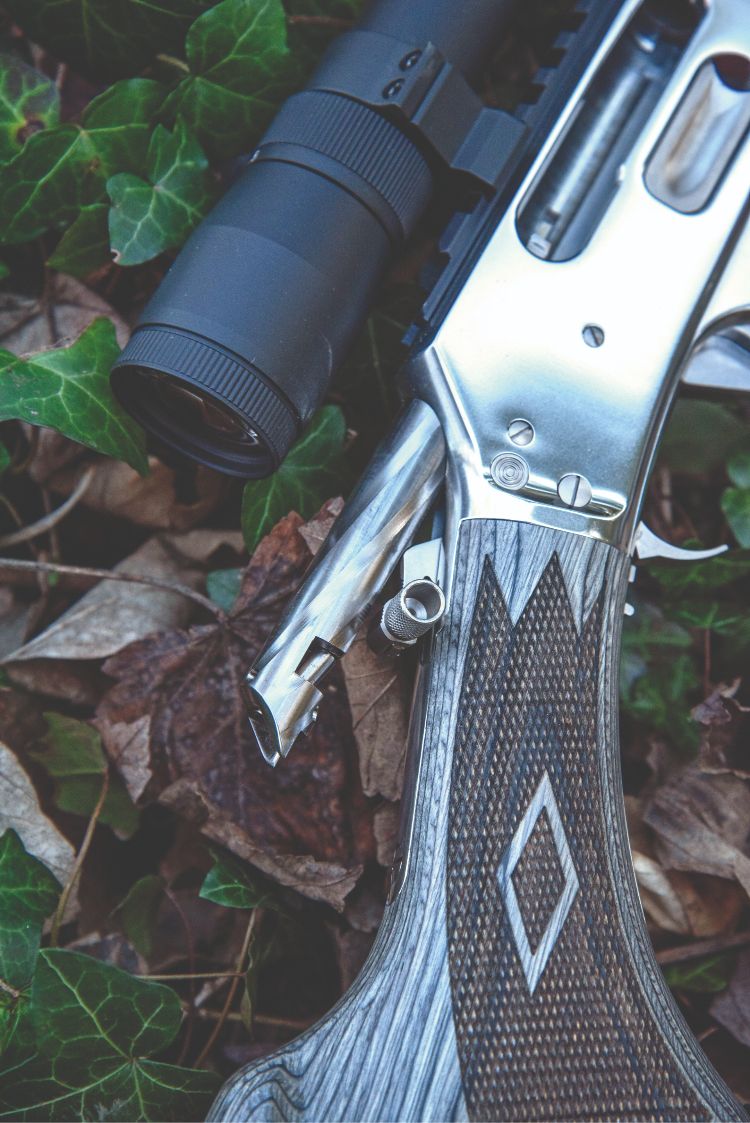
I had shot this particular gun a few months previously at a media event, so it had definitely been well run in by multiple shooters. However, other than one light scratch on the polished steel it didn’t exhibit any flaws – and that includes the sharply chequered grip and forend.
When it comes to firing, this 45-70 discharged 405gr soft point Sellier and Bellot bullets at an average 1413fps. It achieved a tight group with the first five shots on paper and once the sight was adjusted shot accurately to point of aim. Trigger pull was crisp with a consistent 1785gr/63oz breaking weight, which suits a heavy calibre hunting rifle.
I envisage this gun being used as a shorter-range, reactive hunting rifle that is unlikely to be pushed out to long range. I considered 50m a suitable trial distance considering the gun’s likely use and achieved a 16mm centre-to-centre group, which equates to 1.1 MOA. I would be totally confident in this rifle at realistic hunting ranges. A longer barrel may have brought the muzzle velocity closer to the manufacturer’s published 1510fps figure, but I felt it made little real world difference.
So, who is this rifle for? In the UK we are lucky to only briefly experience weather conditions other hunters around the globe accept for weeks on end. The concept of dressing warmly is not alien to us, and in such circumstances using a big cartridge like the 45-70 is great because you won’t fumble these finger-sized shells when loading the gun even if you can’t feel your own fingers in big gloves. Your hand is wrapped in that loop to cycle the action, so there’s no fumbling with a small bolt handle and having to insert your finger into a trigger guard after each time to work the bolt.
At first I wondered why anybody would hunt with a rifle like this, but after using one I find myself loving its old school, bold approach contrasted with the modern manufacturing precision Ruger have brought to the concept. I like the big, short bullet, which although not fast still has in excess of 1700ft-lb of energy – generated primarily by mass not velocity.
I have no bears or velociraptors local to me to test the bullet’s expansion performance, but a broad 0.45″ lump with low sectional density will have a huge primary knock-down effect. Contrast that with smaller, faster bullets that can go right through an animal, leaving it standing and looking a little confused – but not immediately halted in its tracks.
Would I hunt with one in the UK? Maybe for big, close-in stags. But what if you encountered the same stag at even a modest 125m. Then you would have to replan your ballistics as this is not a flat shooter. And anyone who tries it on wild boar will find that the recoil significantly disturbs your sight picture.
CONCLUSION
There is no doubt Ruger have greatly improved the build quality of Marlin rifles, which continue to blend classic rifle charm with just enough modernity to make them desirable, without any functional sacrifice if the style and calibre are what you desire.
Tech specs
- Calibre: 45-70 Government
- Capacity: 6+1
- Stock: Grey laminate
- Material: Stainless steel
- Finish: Polished stainless
- Front sight: High visibility tritium fibre optic
- Rear sight: Adjustable ghost ring
- Weight: 3.3kg/7.3lb
- Overall length: 946mm/37.25″
- Length of pull: 340mm/13.38″
- Barrel length: 485mm/19.1″
- Muzzle thread: 11/16″x24
- Barrel: Cold hammer-forged 410 stainless steel
- Twist rate: 1:20″ RH, six-groove
- Sights: Picatinny rail and ghost ring/fibreoptic
Contact Vikingarms.com – also for Leupold optics and Sellier & Bellot ammunition.
Related Articles
Get the latest news delivered direct to your door
Subscribe to Rifle Shooter
Elevate your shooting experience with a subscription to Rifle Shooter magazine, the UK’s premier publication for dedicated rifle enthusiasts.
Whether you’re a seasoned shot or new to the sport, Rifle Shooter delivers expert insights, in-depth gear reviews and invaluable techniques to enhance your skills. Each bi-monthly issue brings you the latest in deer stalking, foxing, long-range shooting, and international hunting adventures, all crafted by leading experts from Britain and around the world.
By subscribing, you’ll not only save on the retail price but also gain exclusive access to £2 million Public Liability Insurance, covering recreational and professional use of shotguns, rifles, and airguns.
Don’t miss out on the opportunity to join a community of passionate shooters and stay at the forefront of rifle technology and technique.



